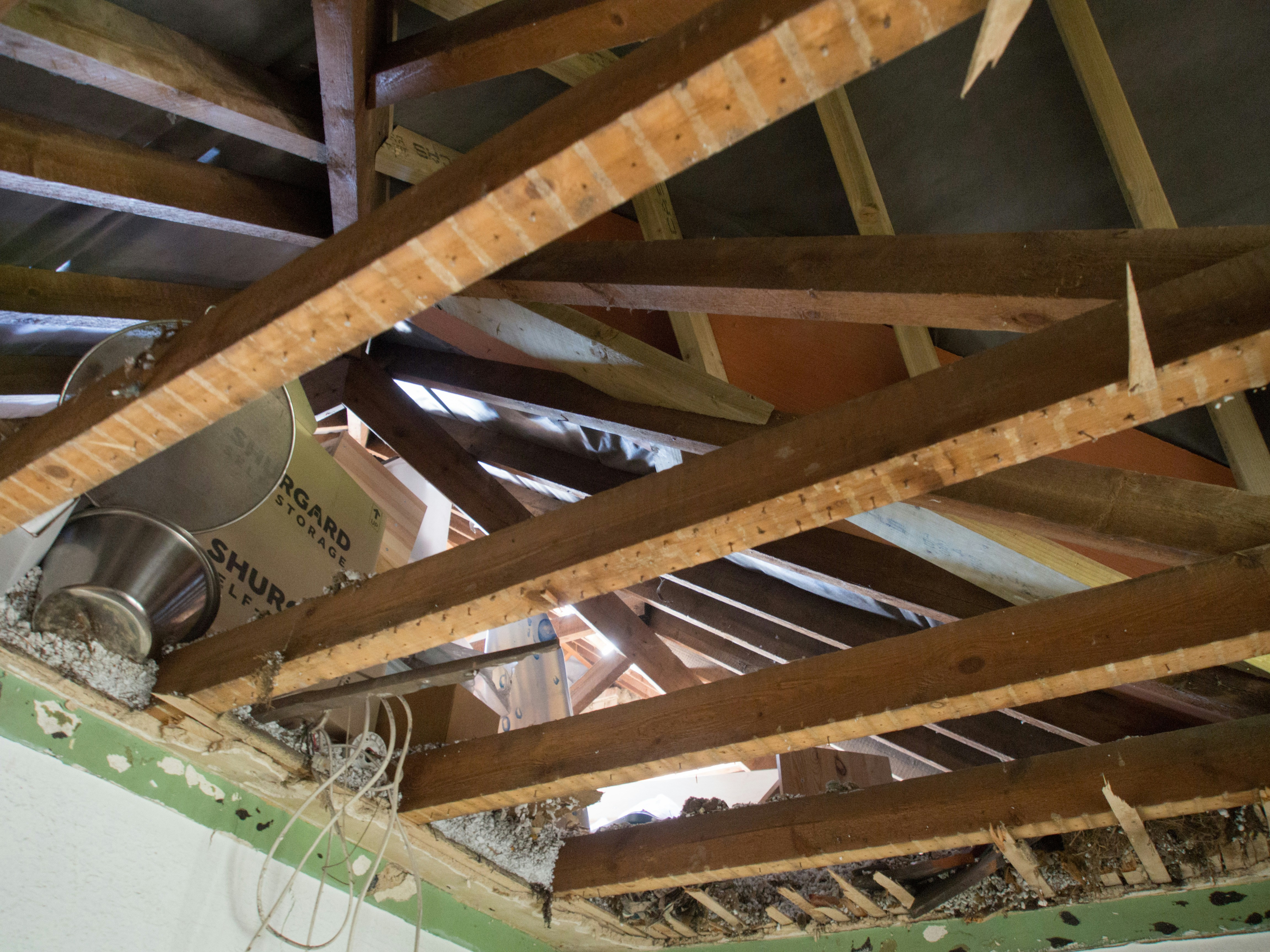Understanding Attic Ventilation
Attic ventilation plays a vital role in maintaining a healthy home environment by regulating temperature and moisture levels in the attic space. Essentially, it involves the controlled exchange of air between the attic and the outside environment. This process helps to mitigate problems such as excessive heat buildup, which can lead to numerous issues including ice dams in winter and premature roof decay.
There are primarily two types of attic ventilation systems: natural ventilation and mechanical ventilation. Natural ventilation relies on passive airflow facilitated by architectural features such as soffit vents and ridge vents. Soffit vents, located at the eaves of the roof, allow cool air to enter the attic, while ridge vents, positioned along the peak of the roof, enable warm air to escape. This natural flow of air is critical for maintaining the ideal balance of temperature and moisture.
On the other hand, mechanical ventilation involves the use of powered devices like exhaust fans to increase air circulation. These systems can be particularly useful in attics that experience minimal airflow due to their design or situational limitations. Regardless of the type, both systems require proper placement and consideration of the airflow dynamics to function effectively. Ideally, a 1:150 ratio of vent space to attic area is recommended, optimizing airflow conditions to prevent heat accumulation and moisture retention.
The impact of effective attic ventilation extends beyond merely keeping the space cool. Well-ventilated attics can prevent moisture problems, thereby protecting the structural integrity of the roof and reducing the likelihood of mold growth. By adding years to the lifespan of roofing materials and contributing to overall attic health, proper ventilation is an indispensable part of home maintenance, ultimately ensuring a safe and comfortable living environment.
The Science Behind Ice Dams
Ice dams are a common issue that homeowners face during the winter months, often resulting from inadequate attic ventilation. To fully understand how ice dams form, it is crucial to examine the interaction between warm air, snow, and cold roof eaves. When warm air from living spaces rises into the attic, it raises the temperature of the roof surface, causing any accumulated snow to melt. This melted snow then runs down the slope of the roof towards the eaves, where the temperature is lower due to being exposed to cold air.
As the melted snow reaches the colder eaves, it refreezes, forming an ice dam. Over time, the accumulation of these ice formations can obstruct the flow of additional melting snow, creating a backlog. This led to the potential for water to seep under roofing materials or into the attic, causing significant moisture problems. The degree of roof pitch can also impact the likelihood of ice dams; flatter roofs tend to hold snow longer, exacerbating the melting and refreezing cycle.
Other contributing factors include insulation levels within the attic. Insufficient insulation can allow heat to escape from the living space, further warming the roof and promoting melting. Inadequate ventilation adds to this issue; without proper airflow, hot air becomes trapped in the attic, increasing the temperature of the roof. External weather conditions like prolonged periods of snow or fluctuating temperatures can also heighten the risk of ice dams. Once formed, ice dams can be detrimental. They may lead to roof leaks, structural damage, and costly repairs, making effective attic ventilation essential in preventing these ice formations.
Preventing Moisture Problems Through Effective Ventilation
Effective attic ventilation plays a crucial role in preventing moisture problems in residential buildings. When warm, moist air becomes trapped in the attic, it creates a perfect environment for mold growth, wood rot, and deterioration of structural integrity. This moisture accumulation can have serious implications for the overall health of the home and its occupants.
One of the primary causes of excess moisture in an attic is inadequate ventilation. Proper airflow helps to regulate humidity levels, ensuring that any moist air can escape and be replaced by drier air. This process is essential for maintaining temperature consistency within the attic space. When hot air rises and escapes through vents, it prevents condensation from forming on wooden structures, insulation, and other surfaces, thereby reducing the chance of mold and mildew proliferation.
To achieve effective ventilation, homeowners should consider implementing both passive and active ventilation solutions. Passive ventilation involves the installation of soffit vents, ridge vents, or gable vents, which allow for natural airflow. Active ventilation may involve powered attic ventilators, which can be particularly useful in areas with high humidity or significant temperature fluctuations. Maintaining these systems is vital: regular inspections, cleaning, and timely repairs can ensure that ventilation systems operate efficiently and effectively.
Additionally, the relationship between attic ventilation and insulation performance cannot be overlooked. Insulation serves to keep conditioned air within the living spaces; however, if this air is too humid, it can lead to moisture infiltration into the attic. Adequate ventilation complements proper insulation by ensuring that moisture does not build up, thereby enhancing the longevity and effectiveness of both systems.
In conclusion, prioritizing proper attic ventilation is essential to mitigating moisture issues, promoting a healthy home environment, and preserving structural integrity. By understanding and implementing effective ventilation strategies, homeowners can significantly reduce the risk of moisture-related problems.
Tips for Improving Your Attic Ventilation System
Enhancing your attic ventilation system is essential for maintaining a healthy home environment and preventing issues such as ice dams and moisture problems. To begin assessing the effectiveness of your current ventilation system, check the number and type of vents installed. Ideally, your attic should have a combination of intake and exhaust vents to facilitate proper airflow. A rule of thumb is to have one square foot of ventilation for every 300 square feet of attic space, although this may vary based on local climate conditions.
If your attic is lacking in ventilation, consider adding additional vents to improve air circulation. There are various options available, including soffit vents, ridge vents, and gable vents. Soffit vents allow fresh air to enter from the eaves, while ridge vents enable hot air to escape from the peak of the attic. A balanced approach using both types can significantly enhance overall airflow. It may also be beneficial to install a powered attic ventilator, particularly in warmer climates, to help expel heat more efficiently.
Proper insulation is another critical factor in optimizing attic ventilation. Ensure that insulation materials do not obstruct airflow through the vents. Additionally, consider using baffles to direct airflow around insulation, preventing moisture buildup and ensuring a well-ventilated space. Regular maintenance is essential; inspect your attic periodically for debris or blockages that may hinder airflow, particularly after storms. Furthermore, pay attention to signs of moisture intrusion, which may signal an underlying issue with your ventilation system.
While many home improvement tasks can be performed independently, safety should always be a priority. If you feel uncomfortable working in your attic or lack the necessary technical skills, it is advisable to seek professional help. Expert contractors can provide valuable insights and identify specific improvements that may be required, ensuring that your attic ventilation system operates effectively and safely.
If you’re interested in purchasing the item you seek, please click the link for additional details: #americanachoice.
https://amzn.to/3SBN3Oy
AFFILIATE DISCLOSURE: I am an affiliate for this company, I am not a paid employee.
I may receive a commission if you click a link on this page and choose to purchase something.
You can rest assured I will only share things I believe in and will be valuable to you.



